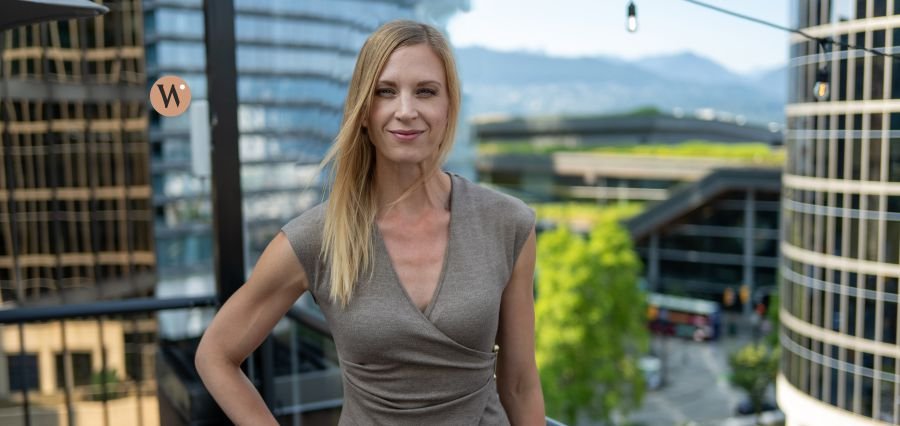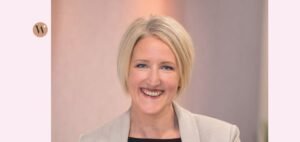If you picture the world of international banking and capital markets (BCM) regulation as a high-stakes maze—full of shifting walls, hidden pitfalls, and unexpected shortcuts—then Sarah Reppchen is the kind of leader who doesn’t just find her way through. She draws the map, brings others along, and turns the journey into a competitive advantage.
Why Regulation Is a Launchpad
Navigating Basel III permutations, evolving Liquidity and Capital Adequacy processes (e.g., Intraday Liquidity) and ILAAP (i.e., Internal Liquidity Adequacy Assessment Process), heightened scrutiny of RESL and CRE lending, and the rise of digital-asset and stablecoin rules demands technical accuracy and strategic foresight. For Sarah, these aren’t checkboxes; they’re the architecture of resilience and the engines of long-term success and competitiveness.
As Sarah says: “I focus on building agile risk frameworks connecting financial and non-financial risks, that empower organizations to innovate confidently, while ensuring resilience and regulatory compliance in a rapidly changing world.”
Sarah has served clients across a broad variety of topics, ranging from financial, regulatory reporting, and disclosures early in her career, to non-financial risks, AML, and Compliance, ultimately deepening her focus on financial, investment, and model risk governance. She serves as an independent auditor, from assessing the adequacy of processes on behalf of boards or regulators in her domain, all the way to strategically advising on transformations and transactions.
With a rare blend of audit and advisory experience, she has equipped her clients to adapt to emerging regulation confidently—aligning risk management, capital and liquidity, reporting, operations, and the technology that underpins all of it. She leads Deloitte Canada’s Financial Risk Advisory and Transformation practice, focusing on capital, leverage, credit, market, liquidity risk, and treasury. Her work spans G-SIBs and D-SIBs; mid-sized institutions; fintech’s; regulators; pension plans; and investment managers—enabling end-to-end change that integrates governance, processes, data, and platforms.
She adds: “By embedding risk considerations into the earliest stages of digital strategy, clients can accelerate growth with confidence, ensuring compliance and resilience even as they embrace new technologies and business models.”
Her leadership formula is simple: IQ + EQ + servant leadership mindset + courage under ambiguity—used to build high-trust, high-performing teams and decisive programs.
A Global Lens, Forged Early
Sarah’s path to the world’s financial hubs began far from them. Her upbringing was rather unconventional and may have infused some of that spark, boldness, and visionary approaches into her career later on. The daughter of German immigrants, she was born in Burns Lake, a small town in northern British Columbia, and spent her early years off-grid on Francois Lake. After moving back to Germany, she was raised by her mother and grandparents, building resilience through disruption while working her way through university.
Her desire to broaden her horizons and make an impact on the global stage steered her towards studying International Business in Wiesbaden near Frankfurt. She spent a year in Santiago de Chile studying Ingenieria Comercial, then joined one of the Big Four Professional Services firms in Frankfurt in 2009 in a group specializing in banking regulation, later obtaining her German CPA (Wirtschaftsprüfer).
In the aftermath of the global financial crisis, her motivation crystallized: strengthen the system to prevent the next crisis—or at least enable institutions to absorb its shocks better. Her work took her across NYC, London, Singapore, Pune, Mumbai, Manila, Sydney, and throughout Europe. Having studied International Business was especially valuable when working with her teams and clients in India and Asia, where banks have established offshore facilities to optimize their operations, which she has enjoyed visiting to oversee and deliver projects onsite.
It looked like she was on the right path—but that was just the beginning. A client and early influence, Sylvanus (Sus) Minors, former Director of Regulatory Relations, Findings and Controls Management at Deutsche Bank in New York, offers this view of Sarah’s trajectory:
“I first met Sarah around 15 years ago, and what immediately stood out was her curiosity. While she was already delivering high-quality work, her love of learning enabled significant and continual growth. Her curiosity extended into all aspects of life; whether it was enjoying authentic jazz with clients in the Bronx or visiting the world-renowned Brooklyn Tabernacle Choir with colleagues. This broad intellectual curiosity has served her well; she is always willing to listen and seeks optimal solutions for her clients, with a clear understanding of risk and reward in a safe, secure, and sustainable manner.”
Risk as a Steering Function
Risk is the steering wheel—not the brakes. Forward-looking risk functions, Sarah argues, should act as a steering wheel—not the brakes. That means integrating financial and non-financial risks with operations, embedding controls by design into processes, and delivering timely, data-driven insights that inform the business.
It is important to acknowledge differences in how Risk should be embedded and where prudential regulatory requirements are the drivers, as not all sectors are the same in how they operate and what they need to be resilient and successful.
This is especially true when looking into the institutional investment management sector, the pension plan sector (as compared to prudentially tighter regulated deposit-taking institutions), and retail-focused institutions. Also, the concept of proportionality is one that Sarah incorporates into her advisory approach. Some risks do warrant considerations of the complexity and scale of an organization, and some do not, as they are agnostic to an organization’s size, so embracing a nuanced, tailored approach vs. a one-size-fits-all approach is wise.
One illustrative arena in the banking sector, where Risk and Finance can unlock value as steering functions, is ICAAP and ILAAP. Born as compliance exercises, these frameworks can—when fed by the right processes, data, and infrastructure—become performance tools. They should connect to recovery and resolution planning and to business planning itself, especially amid volatility, fast-moving technology, and regulatory expectations that ratchet higher every quarter.
Having worked with a variety of Financial Institutions globally, she has observed leading practices in how some banks have integrated their ILAAP and ICAAP into their business as usual (BAU) processes, making updates on a more frequent basis, e.g., quarterly vs. annually, to use insights for stress-testing, business planning, and forecasting.
She has found that strong collaboration between Risk, Finance, FPnA, and Treasury teams, supported by an integrated data lake, has been shown to be a catalyst to extract the most value out of these tools. For such transformational initiatives, it is similarly important to show up with a cross-functional team of regulatory, technology, and data experts coupled with strong operational knowledge.
She notes: “I prioritize transparent communication, data-driven insights, and a relentless focus on client objectives building on a strong, multidisciplinary team, as nobody can do this alone.”
Divergence, Disruption, and the Need to “See Around Corners”
Banking and capital markets are being reshaped by generative/agentic AI, payment-rail modernization, end-to-end digitization, geopolitical shifts, regulatory divergence, evolving talent dynamics, the rise of digital assets (including stablecoins, cryptocurrencies, and CBDCs), and the growing role of non-bank financial institutions. Add to that heightened cyber and third-party risk, the emergence of quantum computing, and customers who expect tailored, real-time experiences.
These forces manifest differently by region—U.S. deregulation in pockets while stablecoin policy advances contemplated with the GENIUS Act, Europe’s cautious evolution of completing the implementation of the final Basel III, aka Basel IV, reform with delays in the FRTB timelines, and ongoing advancements in Australia and Canada, such as OSFI’s ILAAP consultation. The global regulatory divergence poses a challenge to global banks that Sarah is dedicated to supporting, with many moving targets across the jurisdictions in which they operate. Institutional responses must be equally nuanced: agile, localized, and anticipatory.
Making Global Connectivity a Feature, not a Friction
As the industry transforms, Sarah has doubled down on technology enablement, operational efficiency, and alliance-driven solutions—integrating automation, generative AI, and data to help clients adapt across the full value chain, e.g., in lending, from underwriting to collections. Re-thinking an optimal workflow with integrated controls across 1 and 2 Line, considering regulatory compliance expectations, and managing credit risk effectively were the most recent projects she led to support lenders with transforming their retail lending control environment and operations.
She mobilizes strategic alliances across technology, data, and fintech ecosystems to accelerate outcomes. And how does this look within her own project teams? Using AI to optimize delivery is not a nice-to-have anymore; it is a must-do, and she integrates the use of AI in each project to unlock maximum value, efficiencies, and quality for clients and the team.
In the world of Financial Risk, Sarah represents Deloitte Canada on Deloitte’s Global Basel Steering Committee, a network advancing capital, liquidity, reporting, and data topics. Her global orientation came through visibly at the CBA–IIF Canada Forum in Toronto, where she spoke on Basel III divergence alongside industry leaders and standard setters.
Anthony G. Ostler, President and CEO of the Canadian Bankers Association (CBA) and Chair of the International Banking Federation (IBFed), reflects on her industry impact:
“Deloitte has been a strategic partner for the CBA and the banking sector on addressing critical topics through joint initiatives and events across various topics, from Financial Crime, Anti-Scam to Economic Resilience and Prudential regulation. I personally experienced Sarah’s visionary leadership in banking by her ability to provide clarity and new perspectives on complex regulatory trends and global regulatory divergence as part of our CBA-IIF Canada Forum in 2024. With her global experience, constructive and connected thinking, visionary mindset, and together with the global Deloitte network, I am optimistic she will continue to make a measurable impact on our systemically important industry.”
Uniting Strategy, Risk & Transactions
Uniting strategy, risk, and transactions has been her operating model—tying advisory to execution and dealmaking so change sticks. Her approach to leading these complex engagements is grounded in four core principles. First, bring a deep curiosity and openness to new ways of thinking, embracing the need to pivot when circumstances evolve—second, valuing candor and the courage to challenge assumptions, drawing on her German background to speak directly and constructively. Third, prioritizing cross-functional collaboration and holistic thinking to ensure all perspectives are considered, and fourth, applying a global mindset to tailor best-in-class solutions for each client context.
Using this model, she aligns diverse teams around a compelling, shared purpose, connecting the three lines of defence, liaising between financial institutions and regulators, and between management and boards. Sarah’s work often centers on reframing risk as an enabler of innovation.
— For one bank, she and her team designed a second-line continuous-monitoring framework, repurposing existing metrics to enable real-time oversight and early-warning capabilities. In times of higher pace regulatory, macro-and micro-economic changes, real-time continuous monitoring is critical to stay on top of changes and shift from a reactive to a proactive risk management approach. With the latest advancements in data analytics and AI-driven tools, those continuous monitoring processes can become even more powerful in strengthening risk and compliance management, as well as generating valuable insights for the business to make risk-informed decisions more quickly and very targeted.
Some Australian and US banks have gone one step further, successfully establishing the role of a Chief Controls Officer across the organization, providing a cohesive operating model around monitoring and controls enterprise-wide, something Sarah draws inspiration and learning from these examples to bring to her clients in North America.
— In another engagement, she led the development of a global governance and oversight model to manage technology and data risks across the various subsidiaries and regional offices of a global bank. The value delivered as part of this project was multifaceted, from creating awareness and buy-in of the global entities regarding the importance of alignment with the head office, to mitigating risks for the organization as a whole, considering the wise words of a chain being only as strong as its weakest link.
In addition, the governance model she employs can be used as a blueprint for a structured approach to ensure adequate, proportionate reporting, balancing costs, and benefits.
She is equally at home in the public-interest domain. One of her proudest outcomes: leading a complex merger of two regulatory bodies, not by simply stitching processes together, but by identifying best practices, redesigning core functions, and modernizing them through technology to deliver a more intuitive, efficient, and cost-effective regulator for North America.
Voicing Clarity in Complexity — The Need for Non-Traditional Experts
Across the three lines of defence, banks are hiring differently—data scientists, behavioral experts, and leaders who can connect risk, compliance, finance, technology, and the business under clear governance. AI adoption within risk and control functions is nascent but progressing, with success hinging on an enterprise-wide data and analytics strategy and strong committee structures. In parallel, operational resilience has become a board-level priority for managing cross-border data, cyber, and third-party risk in an interconnected world.
Sarah reflects on her journey, how it rounded out her perspectives as she emerged as a leader, having had the privilege to work across many different functions while always dedicated to BCM, from Audit to Advisory, with the Legal team, and being seconded as Chief of Staff for a C-Suite Executive to work on firm-wide strategies.
With increasing complexity in the professional services, banking, and capital markets world, the way AI takes over tasks of traditional research, analysis, and many more requires emerging leaders to train their muscles around critical thinking, communication, and interactions with stakeholders, by leading teams effectively and sharpening their EQ. That is what she focuses on when hiring new team members or when mentoring the next generation of leaders.
She says to emerging leaders: “Remember, the industry is evolving and needs leaders who bring fresh thinking, empathy, and resilience. Your voice and vision can help shape the future of banking—so own your ambition and lead with authenticity.”
A passionate connector and mentor, Sarah invests in emerging professionals who missed apprenticeship-style learning during the pandemic. She supports the Banker’s Association of Finance and Trade (BAFT) Women in Transaction Banking Mentorship program as a mentor and Advisory Council member, and recently spoke on a panel at the BAFT Global Finance and Trade Conference in Washington, D.C. Honey Houchens, Head of SCF Supplier Sales & Engagement, AVP, Global Capital Markets at U.S. Bank and BAFT member, credits Sarah’s mentorship: “In the short amount of time that I’ve known her, Sarah’s support and perspective as a female leader in the banking and capital markets sector have been invaluable to my career development. I’ve benefited both professionally and personally from Sarah through the wisdom and insight she’s shared during our monthly mentoring sessions. Her guidance has been impactful and inspiring (a lot of which I’ve already exercised or implemented in my life!); evidence of how hard she’s worked to develop deep value from all her experiences.”
Making an Impact that Matters
Sarah’s ambition is to make an impact that matters, spanning beyond her professional career and industry engagement. It also encompasses philanthropic initiatives that she drives with great passion as a Charter member and President of the Rotary Club of Vancouver Waterfront. This allows her to connect local support of communities, raising awareness for areas of need, with a global network of Rotarians and allies acting on Rotary International’s core causes: promoting peace, fighting disease, providing clean water and sanitation, supporting mothers and children, supporting education, and growing local economies.
Professionally, Sarah hopes to leave a legacy of globally connected, purpose-driven risk and compliance transformation—empowering institutions to innovate responsibly, foster inclusive cultures, and build trust across borders. Her goal is to create an industry that delivers shareholder value while driving positive change for clients, employees, and society at large. By championing integrity, collaboration, and sustainable growth, she aims to help build a resilient, equitable, accessible, and trusted financial system with lasting impact.
Read Also : Yvanne Enever: Leading with Purpose in the World of Clinical Research




